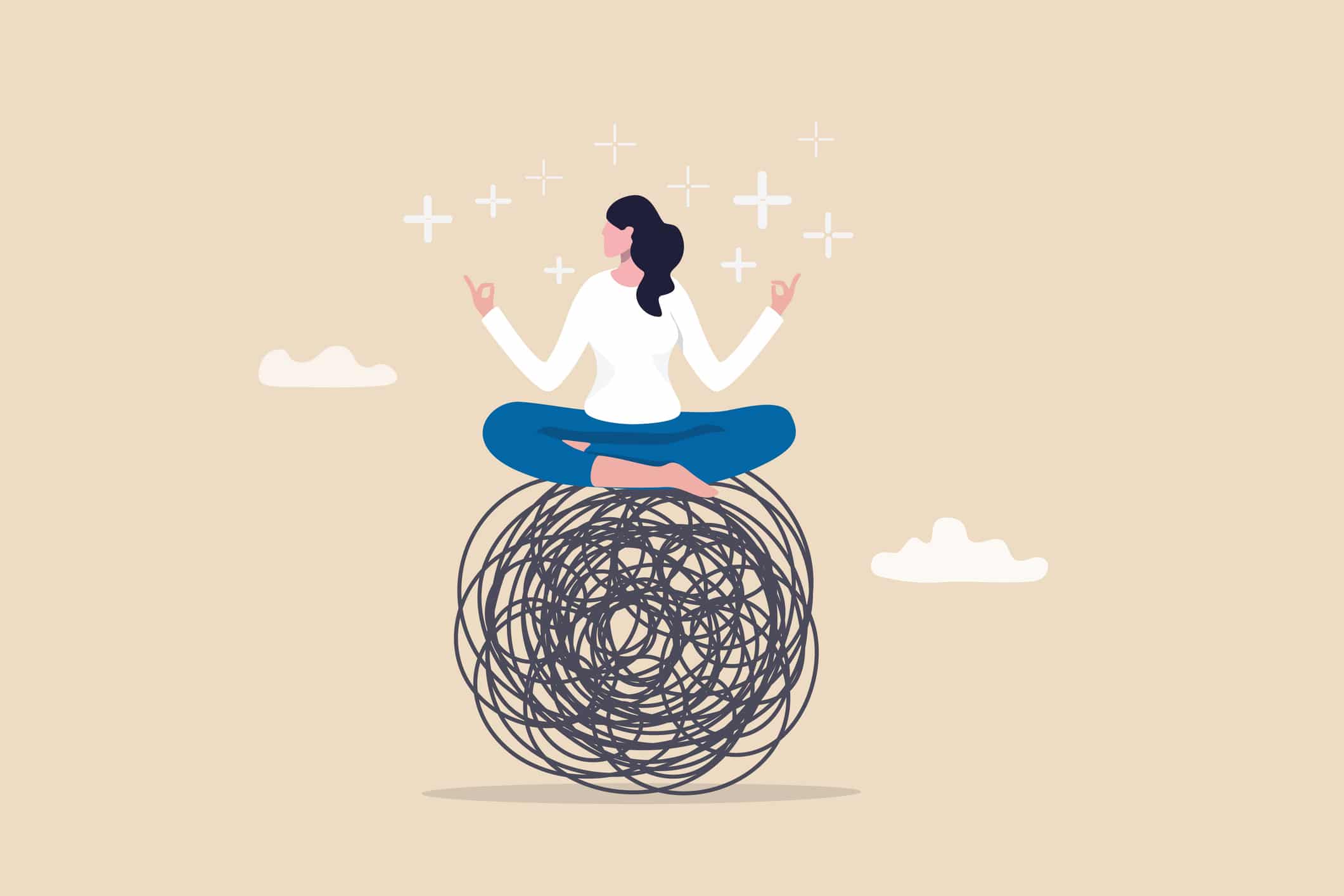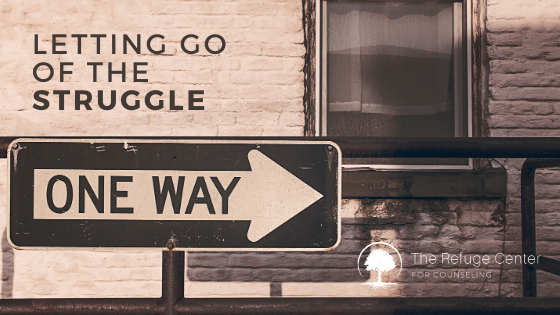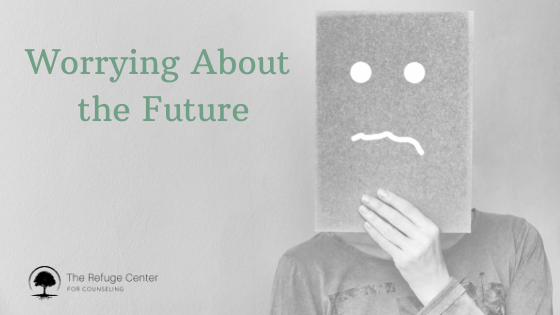According to the World Health Organization (WHO), “An estimated 4% of the global population currently experience an anxiety disorder. In 2019, 301 million people in the world had an anxiety disorder, making anxiety disorders the most common of all mental disorders” (WHO, 2019). Symptoms commonly associated with anxiety include, but are not limited to; difficulty with concentration, feelings of irritability and/or tension, heart palpitations, and a sense of impending danger or doom. When experienced separately or altogether, these symptoms often contribute to a sense that one has little-to-no control over themselves and/or their bodies. Consequently, many individuals struggling with Anxiety find themselves retreating into their minds and feeling as though they are outside of the present moment. Afterall, any given moment may feel like too much to handle and can easily become overwhelming to the point of feeling physically unwell (e.g., nausea, abdominal pain, etc.). This persistent physical and emotional dysregulation may even lead to experiences of dissociation. Defined, dissociating is the experience of detaching from reality and existing in a state where “consciousness, identity, memory, and perception are no longer naturally integrated” (Psychologytoday.com, Dissociation). If you yourself have experienced this, or have talked with someone who has, then you know how terrifying it can be to feel separated from the life going on around you.
Fortunately, there are numerous treatment options available to you and/or anyone wrestling with these challenges. It is worth noting, however, that the most effective treatment for anxiety has been found to be a combination of therapy and prescription medication such as SSRI’s (i.e., Selective Serotonin Reuptake Inhibitors); which rebalance one’s brain chemistry by increasing the amount of serotonin they have and ultimately alleviates symptoms associated with anxiety and a number of mental health conditions. Of course, no two brains or bodies are entirely alike and the decision to explore the use of medication to treat mental health challenges should be made with the assistance of a medical professional such as your primary care physician.
With respect to counseling and psychotherapy, an impressive amount of research has demonstrated that the use of Somatic Therapy can help those with anxious minds to find comfort in their own bodies again. As a therapist who works with individuals across the lifespan struggling with anxiety disorders such as Generalized Anxiety Disorder (GAD) and/or Social Anxiety Disorder (SAD), and as a human being diagnosed with an anxiety disorder as well, I can personally attest to the truth behind those findings!
In short, and for those that are curious, Somatic therapy is a form of therapy that focuses on the connection between the mind and body to promote healing and overall well-being. In fact, the term “Somatic” actually means “of the body.” When it comes to treating anxiety, somatic therapy approaches aim to address symptoms by targeting the physical sensations and bodily experiences associated with related disorders. That is, there is a particular emphasis on cultivating awareness of bodily sensations, movements, and patterns. In many ways, Somatic therapy teaches individuals how to tune into their bodies and notice how anxiety manifests physically.
With this in mind, many counselors such as myself often help those who come to therapy with symptoms of anxiety “lean into” or activate their innate physiological senses when experiencing symptoms such as dissociation and/or problematic overthinking (i.e., rumination). More specifically, a Somatic exercise that I often recommend involves constructing a self-soothing toolkit designed to stimulate all five senses! This toolkit can be kept at home or even taken with you from place to place as you travel around. Makes sense, doesn’t it? (Pun 100% intended).
Ultimately, the goal is to reel yourself back in after getting hooked by anxious thoughts which tend to loop over and over within the theater of the mind. It can be so easy yet difficult to find oneself stuck on a particular thought without even realizing it, and stepping outside of that cycle is a whole other level of challenging! Afterall, doing so means doing the opposite of what has become a familiar habit. Nevertheless, I would argue that the benefits that come from accepting such a challenge far outweigh the costs of staying stuck and detached. Right?
So, without further ado, let’s build a toolkit and help you or someone you know reconnect to the present moment!
Sense-by-Sense and Step-by-Step
When building a grounding toolkit, I encourage my clients to consider the size, portability, and design of the container they will be using. I have seen some incredibly creative ideas, such as a mini sandbox that is able to hold all the items gathered and even a lunchbox for those wanting to keep their toolkit on the “down-low” at work. Ultimately, the purpose of paying attention to and considering the container itself is to help initiate the calming process starting from the very moment you go to look at and open the kit. More importantly, the contents within should serve to activate each of your five senses (i.e., Sight, Sound, Touch, Taste, and Smell). Part of the fun is experimenting with different items and techniques to find what works best for you, and you may even adjust and evolve your toolkit over time as your needs change. What works today may not work tomorrow, and that’s okay. Any attempt(s) to cope well can serve as data to inform next steps taken on the journey; because, sometimes, life can involve going back to the drawing board. Meeting yourself where you are in the present, let’s consider how to activate each of the five senses and what items might work best for you here and now.
Sight – Sound – Touch – Taste – Smell
Sight: First, gather one to two items that are visually grounding. Consider the items and objects that really foster a sense of calm when looking at them. For example, you might choose to include a photo of someone you love (and yes that most definitely includes pets!), or perhaps you might find a thoughtful/meaningful card or letter that you received at one point in your life which spoke/speaks to your heart. Once you’ve identified an item or two for “Sight,” you can then move on to the next Sense!
Sound: Second, pause and reflect on the sounds that evoke a sense of inner peace for you. Now, it may not be possible to place the “sound” itself in your box but perhaps you might set a spare pair of headphones inside with a note naming the sound to play for yourself later. For me, that would be the sound of thunderstorms or ocean waves; which remind me to breathe and soak in what I am experiencing. Other options to consider might be pocket sized instruments or even miniature wind chimes, which I would wager can be found/purchased via a certain online retailer!
Touch: Third, our sense of touch is especially helpful in bringing us back to the present. When picking an item for this piece of your kit, I often recommend choosing something that is smooth or soft. Of course, for some, it may be that something with a rough texture does better at soothing. There is no one-size-fits-all approach here! Examples of objects/items to gather include a smooth stone that can be held in your hands and caressed, a stress ball for squeezing, a soft piece of fabric or a stuffed toy, and play-doh or kinetic sand! (Those last two are particularly popular with children, but us adults can often have just as much fun with them). I have also found lotion to be an effective option, which can be used to massage the hands. Plus, there’s an added bonus if that lotion has a pleasant scent!
Taste: Fourth, for this sense, consider things like a favorite beverage (e.g., hot/iced tea) and/or types of candy that you can’t help but enjoy (e.g., Jolly Ranchers, gummies, and/or fruity gum). Our sense of taste and smell have a powerful ability to connect us with different periods of our lives, so it could be helpful to pick something that reminds you of a time in your life where you felt the most at peace; perhaps something that excites that inner-child of yours!
Smell: Fifth and finally, when seeking to activate your sense of smell, keep in mind the point I made about rekindling memories of positive, past experiences. You’ll want to find a scent that evokes a sense of delight or calm, such as an essential oil (Lavender and Eucalyptus are my personal favorites because they remind me of my yoga/meditation practice) or even a small candle that can be lit and placed next to you while you use other items from your container. Someone I know chose to include a sample of the cologne their partner uses, which also serves to help them feel loved and held in the midst of their anxiety.
Now what?
Once you have gathered all the items you feel make-up the perfect grounding kit for you, then place them inside the container you’ve identified/made and set the collection where you can access it whenever needed; this could be inside the nightstand by your bedside or on a bookshelf. Again, depending on your life situation, where you keep your kit may be personal to you and look entirely different from where someone else might keep theirs. Now that it’s ready for action, consider the time’s you might need to use it! For some that I work with, this has meant turning to their toolkit following a troubling nightmare or after/before an intense conversation with someone in their life. Students, for instance, might experience a great deal of benefit when regularly using their kit during finals/long periods of study.
In any case, whatever your life may look life, you can give yourself a pat on the back or even a hug for taking the time to build something that will help future you feel more centered and present in the midst of distress. I imagine they’ll be thankful for your effort. Great work!
Recruiting Support: Teamwork makes the Dream Work
Naturally, while it has proven to be effective for many people including myself, there may be times when your toolkit doesn’t seem to be doing the trick. In those cases, remember that it’s okay to take a step back from our own strategies and to connect with others who can help us when we’re in need. Sometimes, it’s not just about hearing but also about being heard. A sense of support can go a long way in returning us back to ourselves so that our solo-tools can become more effective again. If you and/or someone you know could use such support, contact The Refuge Center for Counseling today and recruit some assistance for the journey you’re on. We’re here to help you discover the fullest version of yourself and to provide a space designed to ease your spirit.
“A soft reminder: Not everything that weighs you down,
is yours to carry.” – Juansen Dizon
References
Anxiety and Depression Association of America, ADAA. (n.d.). Facts & Statistics: Anxiety Disorders. ADAA. https://adaa.org/understanding-anxiety/facts-statistics
Psychology Today. (n.d.). Dissociation. Sussex Publishers. https://www.psychologytoday.com/us/basics/dissociation
Psychology Today. (2022, June 2). Somatic therapy. Sussex Publishers. https://www.psychologytoday.com/us/therapy-types/somatic-therapy
World Health Organization. (2023, September 27). Anxiety disorders. World Health Organization. https://www.who.int/news-room/fact-sheets/detail/anxiety-disorders#:~:text=An%20estimated%204%25%20of%20the,all%20mental%20disorders%20(1).




